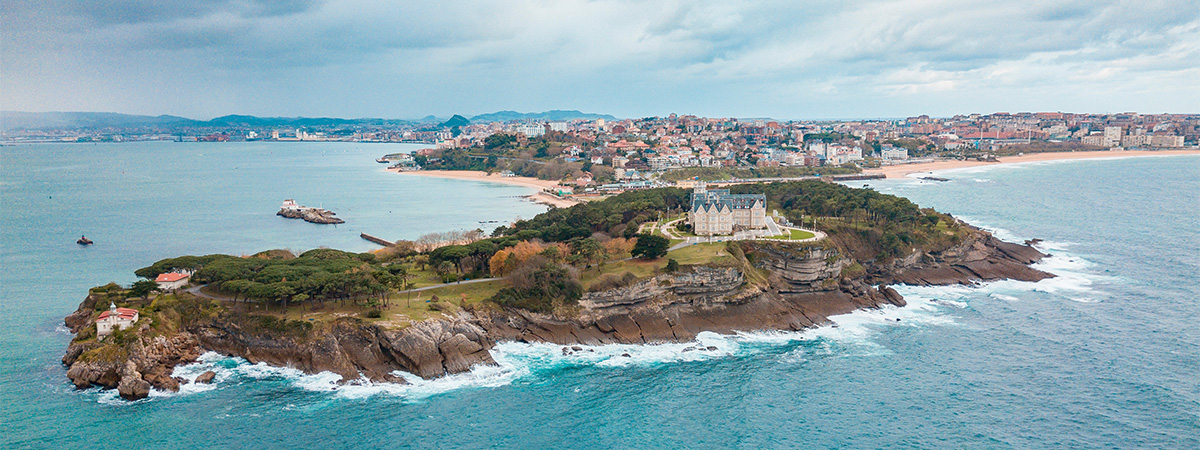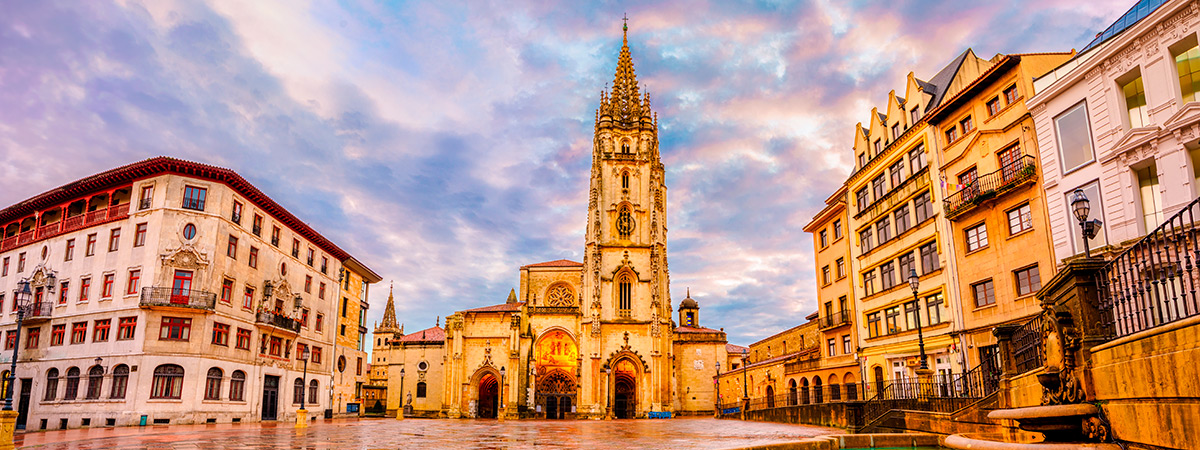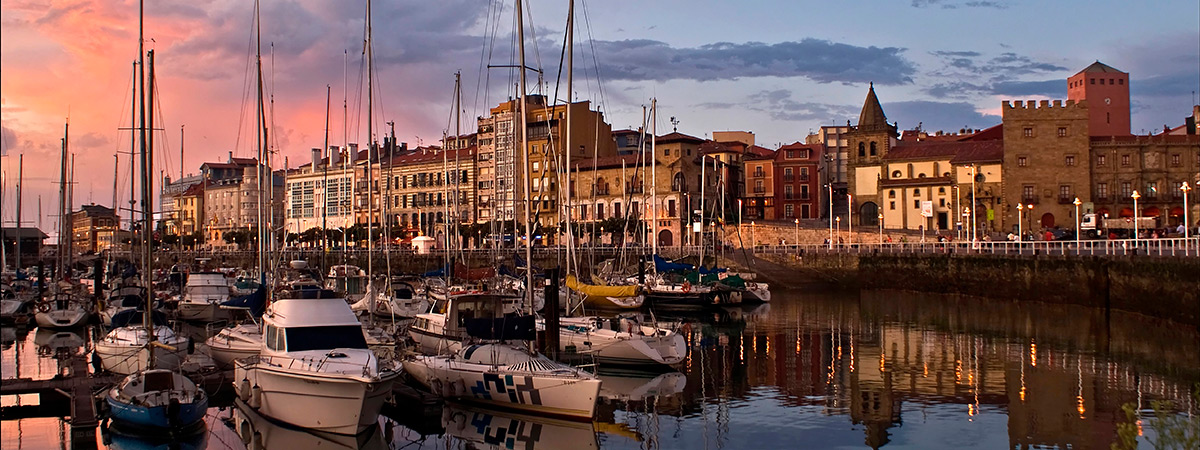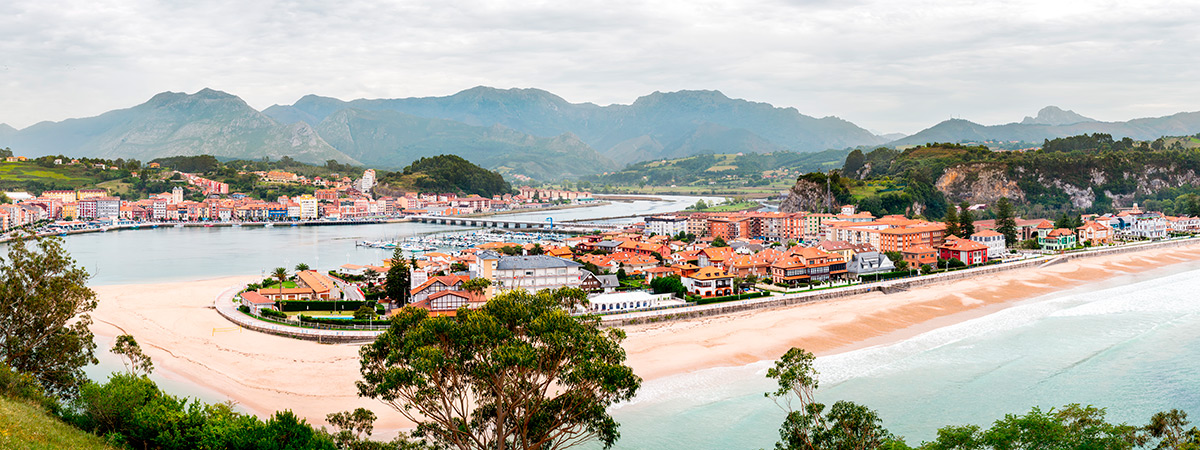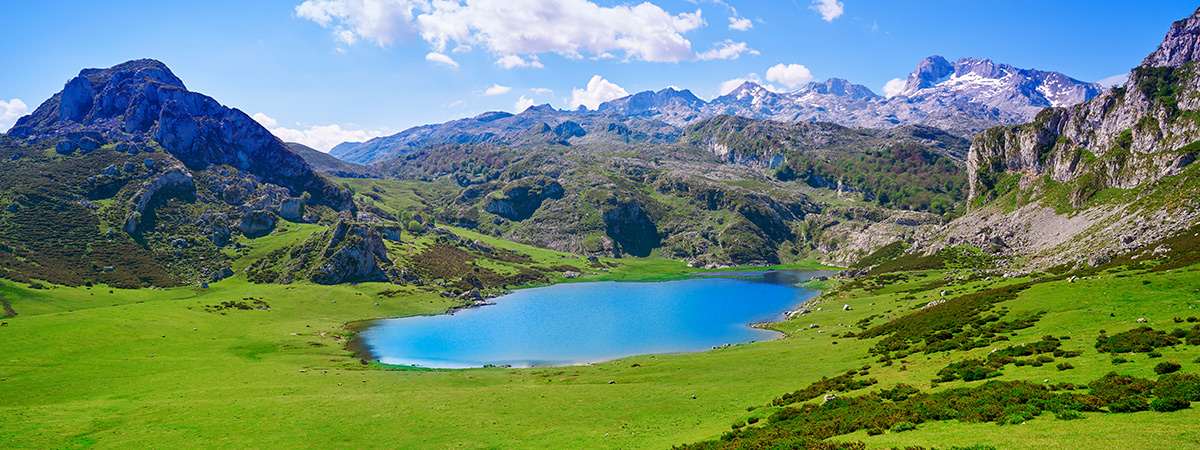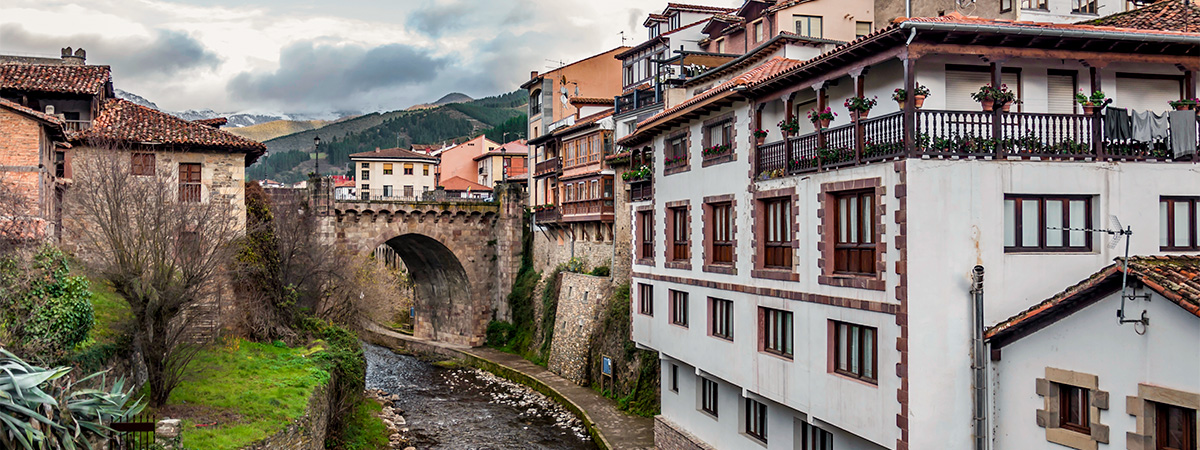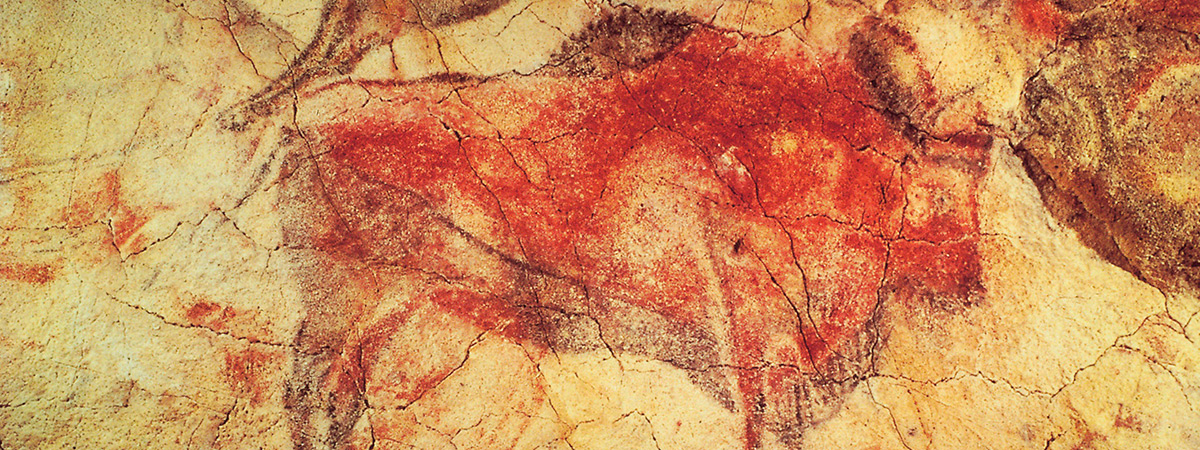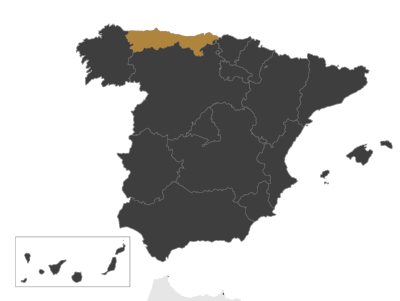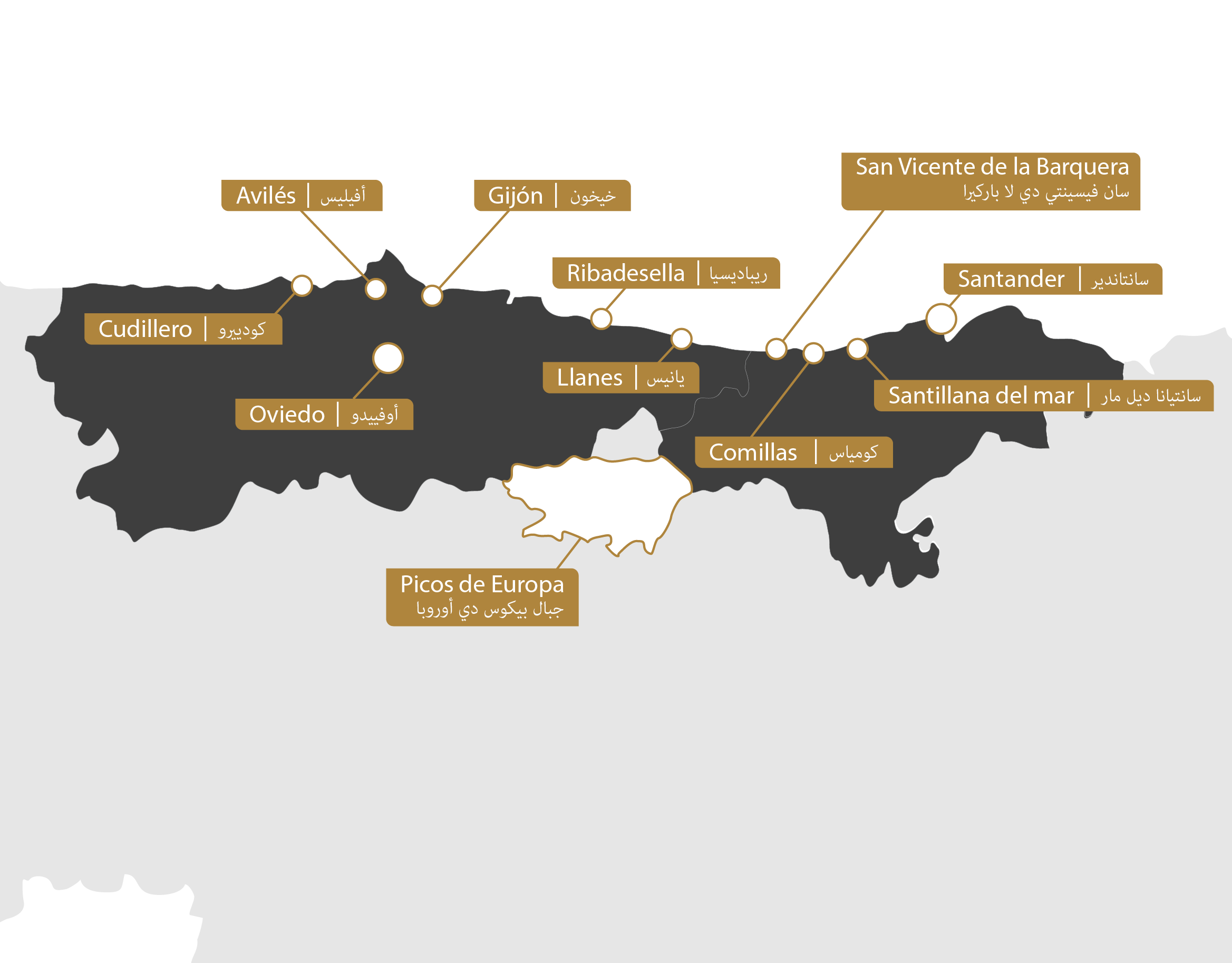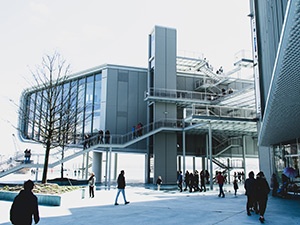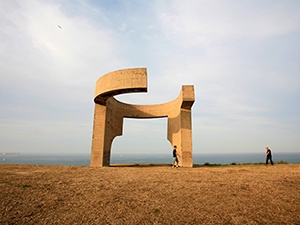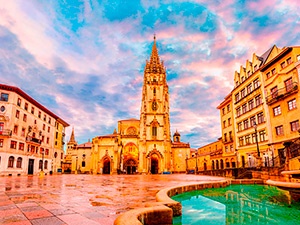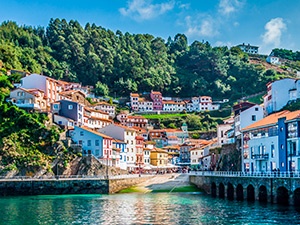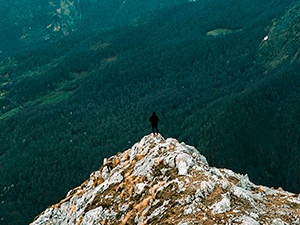Asturias & Cantabria
Traveling to Asturias and Cantabria, a natural scenic paradise, in the north of Spain, means enjoying the gentle sea breeze of its fishing villages, unending white sandy beaches and hiking along charming towns, wide green valleys and emerald lakes with the imposing Picos de Europa mountain range as its backdrop.
A walk through the 3 main cities of Gijon, Oviedo and Avilés in Asturias is enough for one to realise that this region does not lag behind in cultural wealth either while Cantabria is the place to find unique heritage such as the Altamira Caves and Gaudi´s “Capricho” house in Comillas.
The region of Asturias also boasts one of the most delicious regional cuisines in Spain from fresh seafood to local cheeses and its very famous cider while Cantabria is well known for its traditional hearty stews like Cocido montañes and Cocido lebaniego and innovate dishes that can be tried at any of its Michelin-starred restaurants.
don't MISS
Santander
Known for its amazing beaches, elegant architecture, incredible food and a lovely historic quarter set against the natural backdrop of sea and mountains, Santander is a lovely city to explore. Relax on the famous El Sardinero Beach and walk along the Paseo de Pereda Promenade lined with typical houses with lookouts (miradores) or visit the other equally stunning beaches of Los Peligros, Biquinis, Mataleñas and Los Molinucos. One of its biggest highlights in Santander is the beautiful La Magdalena Peninsula where the opulent Palace, once the summer residence of the Spanish Royal family is located.
On the outskirts of the city is the Altamira Caves considered as the “Sistine Chapel of Paleolithic Art”, the Cabárceno National Park, an area of great natural beauty where many species of animals live almost in the wild as well and just 30 kms away is the charming, medieval town of Santillana del Mar which is well worth a visit.
Gijon
On the shores of the Cantabrian Sea, this large coastal city offers an attractive combination of maritime tradition and monumental heritage.
The historic quarter of Cimadevilla, once home to Gijon’s fishing community, is its key attraction – visit the monumental sculpture of ‘Elogio del Horizonte’ (Euology of the Horizon) by the Spanish sculptor Eduardo Chillida for fantastic views of the Cantabrian sea and the city. The structure of the sculpture echoes the sea like a gigantic seashell – an ode to the city’s seafaring history. Walking past the large mansions and old fisherman homes filled with nostalgia and packed into sloping streets and narrow alleys, stop for a drink at any of the cider bars known as sidrerías that are unique to this part of Spain.
Relax on the golden sands of San Lorenzo beach or walk to its other end, located at the mouth of the river Piles to visit an exceptional Parador, housed in a centuries-old mill in the Isabel la Catolica Park. You can also visit the fortified Revillagigedo Palace, one of the most impressive building in Gijon or the splendid Universidad Laboral and nearby Atlantic Botanic Gardens containing more than 3000 different varieties of plants.
Oviedo
The capital of Asturias, Oviedo, is packed with history and culture, offering a wealth of historic buildings, many of which are declared UNESCO World Heritage Sites including the gorgeous Gothic Cathedral of San Salvador, an important stop for pilgrims on their way to Santiago de Compostela and the pre-romanesque Santa Maria del Naranco church. The historic quarter of the city is pedestrianised and makes strolling in Oviedo a pleasure with its many lovely squares filled with cider bars for quick rest stop.
Nearby the Cathedral, visit the Museum of Fine Arts, displaying over 15000 works of art, or the Archaeological Museum, preserving many architectural pieces from the pre-Romanesque house, both of which are housed in the former Velarde Palace. Or simply relax in the citys main public park, Campo de San Francisco, filled with pathways, ponds, fountains and wooded areas.
Coastal Villages
The regions of Asturias and Cantabria are dotted with picturesque fishing villages full of charm and history, offering a wonderful glimpse into the seafaring traditions of these lands:
Comillas: Just 50 kms from Santander, this lovely old village with cobbled streets and squares with ancestral houses. Its most distinctive sight is the house of “El Capricho”, designed by the famous archtitect, Antoni Gaudí with his unmistakable portico and ceramic wall decoration.
San Vicente de la Barquera: An old fishermen's refuge, San Vicente de la Barquera offers one of the most picturesque sights on the Cantabrian coast, with its beaches, the old village and the exceptional backdrop of the snow-capped mountains of the Picos de Europa. Visit its old town, its beautiful estuary full of brightly-coloured boats and walk across its lovely bridges that are another sign of the town’s identity such as the Maza bridge with its 28 arches.
Llanes: The Asturian coastal resort of Llanes is considered one of the most beautiful towns in Spain. Take a walk along the San Pedro walk leading from Sablon beach for lovely views of both the dramatic coastal scenery and the town, visit the sculpted rocky cliffs and unique geological formations called ‘jesters’ of Cuevas del Mar beach and photograph the interesting ‘Cubes of Memory’ breakwater stones along the harbour.
Ribadesella: The colourful, medieval town of Ribadesella’s most distinctive feature is its bridge that divides the fishing port in two, and which every first Saturday in August is the finishing line in Asturias’ most emblematic festival: the canoe descent of the Sella River. The east side of Ribadesella is the location of the old town and historic quarter while the west is home to the Tito Bustillo cave, one of the treasures of European cave art.
Cudillero: This lovely fishing village in Asturias with a small harbour and colourful buildings located along mountains and overlooking the sea is ideal for a quick stop over. The village itself is full of narrow alleys many of which are so narrow that no cars can pass and can be explored only by foot.
Picos de Europa National Park & Lakes of Covadonga
The Picos de Europa National Park is situated between the regions of Asturias, Cantabria and León, in the heart of the Cantabrian mountains and was the first one to be awarded this designation in Spain. With high massifs towering more than 2300 metres high, deep ravines and canyons sprinkled with forests and meadows, all just 20 kms from the sea, it is one of the most spectacular natural attractions in the country. The highest peaks of the range are Torrecerredo (2,646 metres), Pico Tesorero (2,570 metres) and Naranjo de Bulnes (2,519 metres).
Key Points of Interest
Covadonga Lakes (Ercina & Enol): The National Park is also the location of the famous glacial lakes of Ercina & Enol, reached by a winding 12 km road from the town of Covadonga. The lakes are surrounded by beautiful countryside, green meadows and the towering mountain peaks – a picture postcard view!
Cares Gorge & River route: Located right in the heart of the Picos de Europa mountains, this gorge with its narrow passes and gullies attracts more than 300,000 visitors every year. One can walk this trail following the Cares river through small tunnels and across bridges that hand over the abyss, with the rocky mountainside towering on either side. The route covers 12 kms over easy terrain and takes between 5-6 hours and runs between Caín in León province and Poncehos in Asturias. The Cares is accessible at any time of the year, except winter.
Fuente De viewing point: There are many viewpoints from where one can contemplate the park’s beauty and the cable car ride from the town of Fuente De, near Potes is one of them. The cable car, one of the longest single-span aerial lift in Europe, takes you up into the heart of Picos de Europa, soaring past the peaks of Tesorero, Horcados Rojos and Peña Vie, to about 1,800 metres above sea level.
Bulnes & Sotres: Nestled in a valley, the small mountain village of Bulnes is the starting points for walks for views of the peaks. It can be reached by funicular railway from Poncebos, just 6 kms from Arenas de Cabrales. From Poncebos, one can also visit the lovely mountain village of Sotres offering great mountain views.
Ordiales Scenic Balcony: Offering probably the best views of the National Park, this magnificent natural balcony, will leave you speechless. The viewing point can be best accessed by the hiking trail from Covadonga Lakes.
Points of Entry
Cangas de Onis – Located at the edge of the mountains in a valley on the north western side of the Park and in the Asturias region, the town of Cangas de Onis is another ideal location to explore Picos de Europa and the Lakes of Covadonga.
Covadonga – Just 12 kms out of Cangas de Onís, this small town is also key pilgrimage destination for its cathedral which is stunningly located in a dense forested valley, next to a sacred cave and waterfall.
Potes – This small town located in the heart of the Picos de Europa N.P, in the region of Cantabria, is a good base to explore the Eastern part of the park.
Arenas de Cabrales – This town in Asturias region, located to the north of Picos de Europa, serves as another gateway to the park. It is also famous for its native blue cheese and cider.
Activities to enjoy
1. Hiking/Walking Trails: The landscape of Picos de Europa National Park is simply stunning with rocky peaks, gorges, valleys, glacial lakes and leafy forests and the best way to seem them is on foot. There is a network of clearly signposted routes throughout the park, with varying degrees of difficulty marking all the emblematic sights. The most famous walk is the 12 kms Cares river route.
2. Four-wheel biking: While the Picos de Europa is a paradise for hiking and climbing, drives in the area, predominantly in the valleys surrounding the mountains, are also very rewarding.
